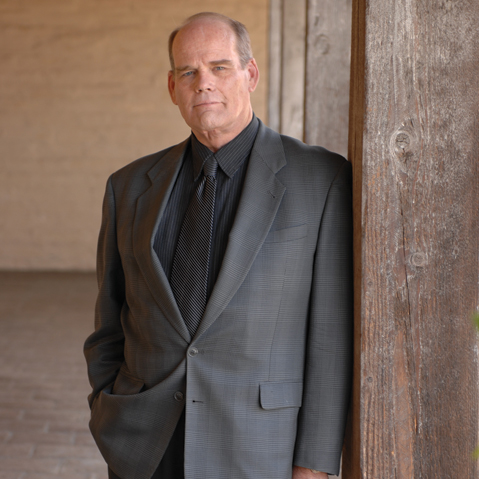David S. Bisol: 1951-2012
Santa Barbara Historical Museum Executive Director

David S. Bisol, executive director of the Santa Barbara Historical Museum, passed away on April 21, at the age of 60.
I was fortunate enough to work with David from the first day he walked through the museum door in 1989. He had given up his job as a systems analyst for an area bank to take on what he often referred to as his “dream job.” David was hired on a six-month contract as acting curator, was appointed curator the following year, soon added assistant director to his responsibilities, and was made executive director in 2007. His steady advancement spoke to his work ethic, talent, enthusiasm, and vision.
David’s long love affair with the South Coast’s heritage was triggered when he was a junior high school student and read the books of Walker A. Tompkins. Even though he himself was a seventh-generation Santa Barbaran, up to then he had little, if any, interest in history. But typical of David, once “hooked,” he plunged ahead full bore to become a vital member of the local history community. At 16 he became a founder of the Goleta Valley Historical Society and two years later was sitting on its Board of Directors. David was a key figure in guiding the Goleta Valley Historical Society through its early decades and was especially instrumental in the restoration of the historic Stow House, the society’s headquarters.
David was a great believer in the power of imagination. He loved all things Disney, and one of his proudest achievements was the fanciful playhouse he fashioned for his nieces and nephew. He loved the Arlington Theatre, its history and architecture, its secret nooks and crannies — a place where folks, sitting under that starry canopy, could give their imaginations full rein. And he loved to regale listeners with his “war stories” of his days as the Arlington’s manager.
He brought that belief in the power of imagination to the Historical Museum. As curator, he designed and installed innovative changing exhibits. One of my favorites was Trail Dust and Saddle Leather, showing off some of the museum’s fine collection of saddles and tack in an interactive exhibit that evoked a cowpoke’s moonlit campsite, complete with chirping crickets and the woeful baying of a coyote. Our museum had never offered anything like it before. David wasn’t interested in displaying history as a series of set pieces; he worked to give visitors a vivid sense of what it was like “back then.” And, on a more playful note, his magnificently costumed portrayal of Father Christmas was the much anticipated highlight of the museum’s annual holiday party.
Under David’s guiding hand, the museum galleries underwent a total transformation in 2003 with the opening of The Story of Santa Barbara, which takes the visitor from the days when only the Chumash were here to the present. Not only did David showcase some of the museum’s finest in this signature exhibition, he devoted the entire first gallery, the Sala, to changing exhibitions, injecting a new dynamism into the museum’s exhibit spaces.
David wanted kids to become as excited about local history as he had been as a young man and, as executive director, pushed for an expanded education and outreach program, in line with his theme for the museum, “Building a Future Worth Remembering.” And David was not just an “idea” man. His capacity for long hours and hard work was impressive, to say the least. He was instrumental in the transformation of the museum’s infrastructure through the years: relandscaped grounds, the installation of climate control and air filtration for collections, high-density storage systems for library and vaults.
It seems a bit of a cliché to say when people pass away that they are not really gone, that they are still with us in some ways. Perhaps it’s become a cliché simply because it’s often true, and I believe it is certainly true with David. Every time a visitor walks through the galleries of the Santa Barbara Historical Museum or conducts research in the Gledhill Library, every time a couple celebrates their wedding in the museum courtyard, they experience in no small part David’s handiwork. So, as shopworn as it may sound, I won’t say good-bye to David, but rather, “I’ll see you at the museum.” For I know I will.
A memorial service for David Bisol will be held by the Santa Barbara Historical Museum and his family in the courtyard of the museum, 136 East De la Guerra Street, on Sunday, May 6, at 1 p.m. The David S. Bisol Memorial Fund has been established by the museum to receive donations on his behalf, to continue his legacy of “building a future worth remembering.” Donations may also be made in his memory to the Goleta Valley Historical Society.
Michael Redmon is the director of research at the Santa Barbara Historical Museum.



